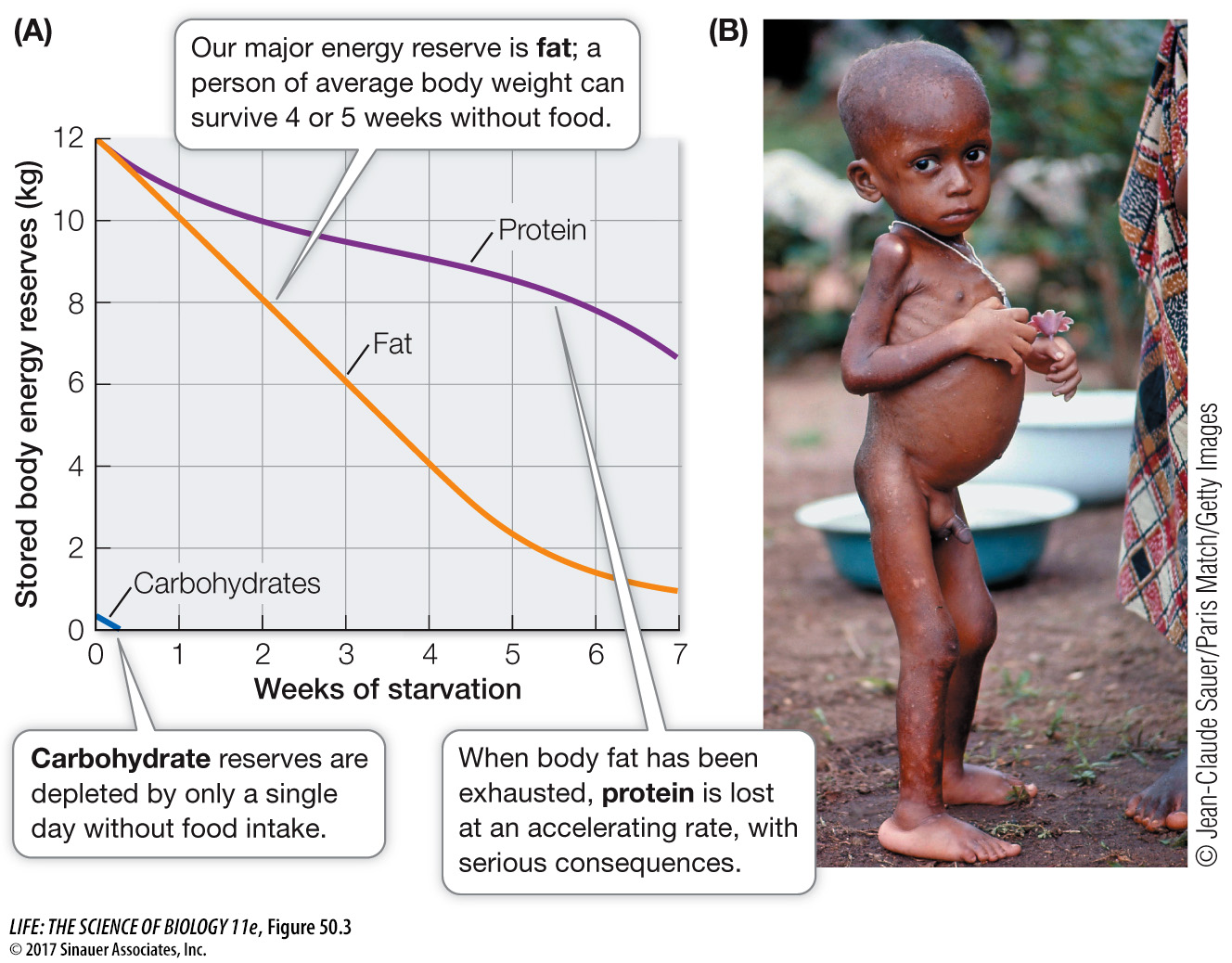Sources of energy are stored in the body
Although cells of the body use energy continuously, most animals do not eat continuously and so must store fuel molecules that can be released as needed between meals. Carbohydrates are stored in the liver and in muscle cells as glycogen, but the total glycogen stored represents only about a day’s basal energy requirement. Fat is the most important form of stored energy in the bodies of animals. Not only does fat have more energy per gram than glycogen, but it can be stored with little associated water, making it more compact and less expensive to carry. Migrating birds store energy as fat to fuel their long flights; if they had to store the same amount of energy as glycogen, they would be too heavy to fly. Proteins are not used as energy storage compounds, but the body’s proteins can be metabolized as an energy source of last resort.
If an animal takes in too little food to meet its energy requirements, it starts to metabolize some of the molecules of its own body. This “self-

When an animal consistently takes in more food than it needs to meet its energy requirements, the excess nutrients are stored as increased body mass. First glycogen reserves build up; then additional dietary carbohydrates, fats, and proteins are converted to body fat. In some species, such as hibernators, seasonal overnutrition is an important adaptation for surviving periods when food is not available. In humans, however, overnutrition can be a serious health hazard, increasing the risk of high blood pressure, heart attack, diabetes, and other disorders, as seen in the Pima that were discussed in the chapter opener.